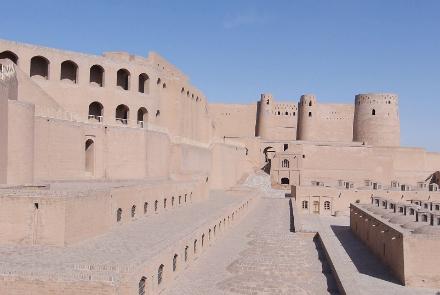May 21st marks the UN World Day for Cultural Diversity for Dialogue and Development, the purpose of which is deepen our understanding of the value of cultural diversity. In a world in which three-quarters of major conflicts have cultural dimensions, the day--and what it represents--is crucial to promote peace, stability and development through the bridging of cultures.
Domestic political tensions, foreign intervention and ethnic power disputes have defined the recent history of conflict for Afghanistan and its people. Beyond the catastrophic human cost of this conflict is the under-reported toll on the country’s rich and diverse cultural heritage – a toll exacerbated by the lack of formal protection given to its cultural sites and practices. It is time to shed light on an overlooked frontline in the conflict in Afghanistan, between cultural heritage and the forces that erode it. It is time to protect the country’s cultural heritage before it is lost to the tides of war.
Afghanistan is not the only country with its cultural heritage threatened, but it is a hotspot. Multiple forces, including land disputes, intergroup conflict and a lack of funds for maintenance threaten its many cultural sites, while the loosening of traditional lifestyles and mass displacement threaten oral traditions and cultural practices.
Many key cultural sites are in dire need of restoration. They include the birthplace of Jalāl ad-Dīn Muhammad Balkhi (Rumi) in Balkh, the Musalla complex in Herat, as well as the fifth century stupa-monastery complex at Takht-e Rostam in Samagan. But restoration is not the only need right now.
The threat to Afghanistan’s cultural heritage was made clear in 2001, when the Taliban destroyed the region’s famous Bamiyan Buddhas, which were, at the time, the largest statues of Buddha on the planet. Protection is key to the continuity of Afghan cultural heritage, and the key to protection is documentation of the current cultural landscape.
The sad consequence of years of neglect is that no one is fully sure of the state of Afghanistan’s cultural sites. A first step towards the protection of Afghan cultural heritage is an inventory of its sites and practices. Without knowing what still remains today, we’re unable to protect it into tomorrow.
We know that restoration, documentation and protection are difficult and resource-heavy tasks - but they are crucial imperatives. Until then, it is timely to think back to the words of Rumi:
“Raise your words, not voice. It is rain that grows flowers, not thunder.”
Let us open up channels of dialogue on the value of Afghanistan’s culture and its place in the resolution of conflict – on this, the UN World Day for Cultural Diversity for Dialogue and Development, and beyond.
Rabia Nasimi is the Strategic Development Manager at the Afghanistan and Central Asian Association, supporting and empowering refugees to thrive in the UK, and promoting human rights in Afghanistan. Twitter: @rabianasimi
Joe Roberts is a strategic communications adviser based in London who has worked with the Afghanistan and Central Asian Association (@a_caa) for over three years.
All are welcome to submit a fact-based piece to TOLOnews' Opinion page.
The views expressed in the opinion pieces are not endorsed or necessarily shared by TOLOnews.
Contributors are responsible for the accuracy of the information in an opinion piece, but if it is discovered that information is not factual, a correction will be added and noted.

